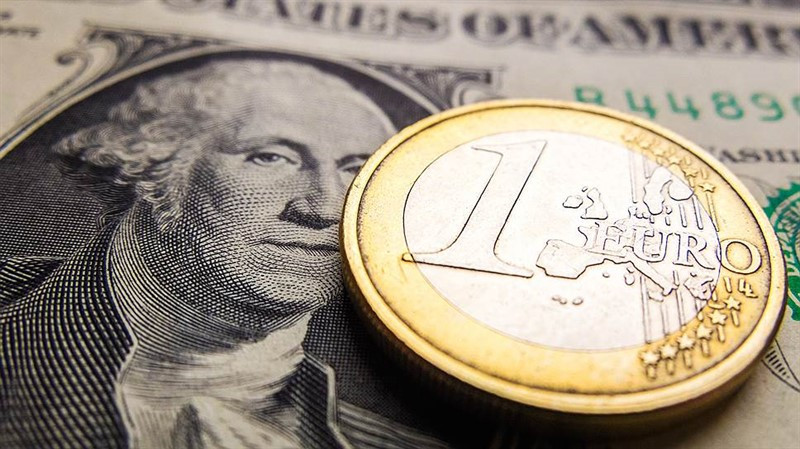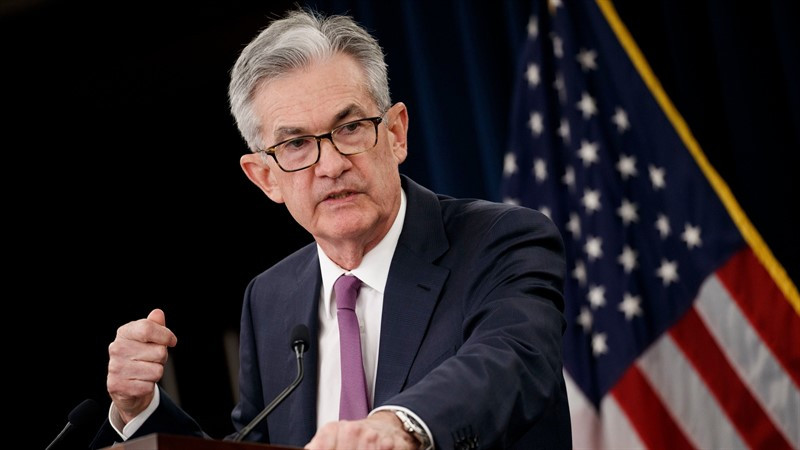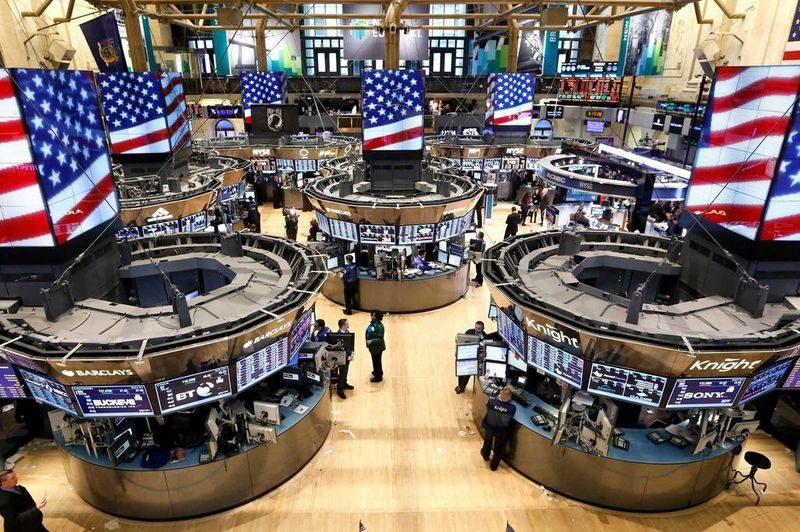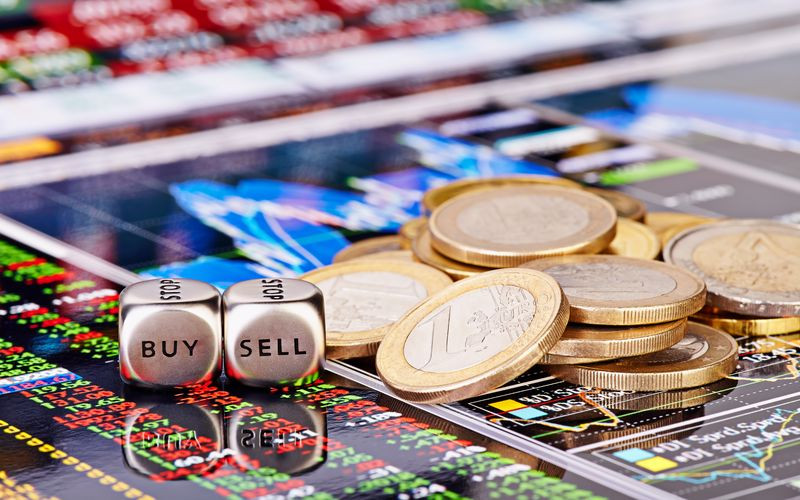
One of the key events on Wednesday was the announcement of the results of the Federal Reserve meeting.
Despite the hawkish signals from the US central bank, the key stock indexes of Wall Street ended yesterday's session on the rise, increasing by an average of 1.5-4%. At the same time, the greenback ended trading in the red, losing 0.7%. The USD index sank to 98.35 after initially rising to 99.00. Meanwhile, the EUR/USD pair rose to weekly highs around 1.1035 after a short drawdown to 1.0960.
The decline in the USD index was unexpected and could reflect disappointment that the Fed's rhetoric was no longer hawkish, Wells Fargo strategists note.
The central bank remained committed to tightening monetary policy, but indicated that it focuses on a balanced approach and will focus on incoming data.
The updated dot chart showed that Fed officials expect seven rate hikes in 2022, whereas in December they predicted only three rises. This hawkish change of mood explains the initial jump in the dollar. However, the market has already included these seven rate hikes in the quotes. Therefore, the strengthening of the greenback quickly came to naught.
Following the results of the March meeting, the FOMC decided to raise the key rate for the first time since 2018 – by 25 basis points.
The Fed is ready to accelerate the pace of monetary policy tightening if necessary, said Fed Chairman Jerome Powell.
At the same time, he noted that the decision on raising the rate and the amount of such a rise will be made at each separate meeting, depending on the incoming statistical data.
"The FOMC will take into account a wide range of information, including data from the healthcare sector, labor market conditions, inflationary pressures and inflation expectations, developments in financial markets, as well as international events," the final communique says.

According to Powell, the good news is that the U.S. economy and labor market are pretty strong and can handle an increase in interest rates.
In a normal situation, the reaction of the players would have been the opposite, but given what is happening in Ukraine and the impact of these events on the rest of the world, investors were encouraged by the comments of the head of the Fed, which had a positive impact on the dynamics of stocks.
The improvement in market sentiment put pressure on the protective dollar, which was gaining strength against its main competitors.
Investors also welcomed the decision of the Chinese authorities, who said they would coordinate the prevention of coronavirus and the fight against the pandemic, monitor economic development, maintain the economy within reasonable limits and ensure the smooth operation of the capital market.
This statement helped to allay some concerns about the slowdown in economic growth in China, which also promises a weakening of growth around the world.
In addition, the Financial Times reported late on Wednesday that Ukraine and Russia had made significant progress towards a potential peace agreement. This contributed to the revival of optimism about the ceasefire, the rebound of US stock indices and served as another factor of pressure on the USD.
Although market participants have seen hints of progress in the negotiations between Moscow and Kiev, there is still no significant progress in this direction. The parties only mention the possibility of reaching a compromise, while Russia's special operation in Ukraine continues, as does the flow of Western sanctions against the Kremlin, which seems to be drying up due to the fact that all the most painful restrictions have already been introduced.
The situation in Ukraine and sanctions against Russia only increase inflationary pressure in the United States, Powell said on Wednesday. In addition to rising prices, the events in Ukraine may affect the American economy in terms of trade and supply chains, he added. In general, the impact of the geopolitical situation on the national economy is expressed in a sharp increase in uncertainty, he believes.
The fight against inflation is becoming a higher priority for the central bank than the pace of economic growth, since it has a strong negative impact on consumer incomes.

The statistical data published on the eve of the US showed that in February the volume of retail sales in the country expanded by 0.3% on a monthly basis after an increase of 4.9% in January.
The slowdown in sales growth last month was caused, among other things, by high inflation, which limits the purchasing power of the population.
The US central bank is now forced to balance between rising consumer prices and the risk of recession.
Apparently, the central bank is facing a difficult choice: if the key rate increases too much, the national economy may stall, but non-intervention threatens to lead to overheating of the economy and the appearance of galloping inflation.
The US consumer price index reached 7.9% in February, which is more than twice the Fed's target. FOMC members believe that the cycle of interest rate increases will allow prices to grow below 3% by next year.
At a given pace, the Fed will have to raise the key rate by 25 basis points at each subsequent meeting. Tightening monetary policy will lead to an increase in the cost of borrowing, and the US economy will lose some momentum.
The US central bank does not rule out the implementation of such a scenario, reducing the forecast for national GDP growth for 2022 from 4.0% in December to 2.8%.
At the same time, Powell assured the markets that the central bank would tame inflation without harming economic activity, which allowed the US stock indexes to finish yesterday's trading with strong growth.
However, experts warn that given the tightening of monetary policy in the United States, stock valuations look too high. Due to zero rates over the past few years, favorable conditions have developed for the growth of stock indices, but now the stock market may be on the verge of a double-digit percentage drop, they say.

It is assumed that as interest in risky assets decreases, the protective greenback will continue to gain weight.
On Thursday, the USD index is trading near 98.30 points, which is more than 1% lower than the multi-month highs reached last week, on March 7.
The US currency may test lower levels in the near future if the momentum to de-escalate the situation in Ukraine persists, but the weakness of the dollar should be fleeting, since the Fed resolutely adheres to the hawkish course, according to Westpac.
"The Fed's rate hike cycle should provide a steady tailwind for the USD in 2022, although past cycles of monetary policy tightening in the US warn that it may take some time for the greenback to strengthen steadily due to higher rates," the bank's strategists said.
"In the near future, the risks for the USD index may be downward. If the impulse to de-escalate the conflict in Eastern Europe intensifies, the index may sink to 97.00–95.70, but aggressive smoothing of the yield curve in the US and support for yields at its short end may cause the US currency to rise to 100 and higher in the coming weeks," they added.
A similar opinion is held by ING economists, who predict the continued strengthening of the dollar against such low-yielding currencies as the euro, and expect a breakthrough of the USD index in the direction of 100 in the near future.
Interest in risk continues to dominate financial markets in the second half of the week, despite the hawkish attitude of the Fed. A risky environment is usually seen as a moderate negative factor for the greenback.
However, according to ING analysts, the Fed's aggressive position should continue to support the dollar, which can hold/increase profits against the European currency.

"The EUR/USD pair may strengthen slightly against the background of reviving interest in risk, but we expect that growth will stop before the area of 1.1100-1.1120. We are not in the camp of those who expect an immediate return to the levels of 1.1300-1.1500, preceding the start of Russia's special operation in Ukraine, and we predict a return to 1.0800 this summer," the bank noted.
On Wednesday, the EUR/USD pair closed in positive territory for the second consecutive day. It did not give up trying to extend the rebound on Thursday.
The euro rose in the hope of progress in negotiations between Kiev and Moscow, while the Fed's decision to raise rates and aggressively fight inflation did not affect the market, since the bar for a hawkish surprise was quite high.
"It is important for the foreign exchange market whether the probability of an energy crisis will decrease, which would be clearly inflationary and would have to do with the exchange rate for many reasons," Commerzbank analysts said.
"A very fragile peace may only help moderately in this regard," they added.
It is obvious that the US central bank plans to tighten monetary policy much more than its European counterpart does. The divergence in the rates of the Fed and the ECB should continue to favor the dollar, not the euro. Therefore, it is still too early to say whether the EUR/USD pair will be able to move to a stable upward trend in the near future.
If the pair manages to turn the 1.1040-1.1050 area into a support, it can target 1.1070, 1.1110 and 1.1150.
On the other hand, the initial support is at 1.1000, followed by 1.0960, 1.0930, and 1.0900.
 English
English 
 Русский
Русский Bahasa Indonesia
Bahasa Indonesia Bahasa Malay
Bahasa Malay ไทย
ไทย Español
Español Deutsch
Deutsch Български
Български Français
Français Tiếng Việt
Tiếng Việt 中文
中文 বাংলা
বাংলা हिन्दी
हिन्दी Čeština
Čeština Українська
Українська Română
Română

